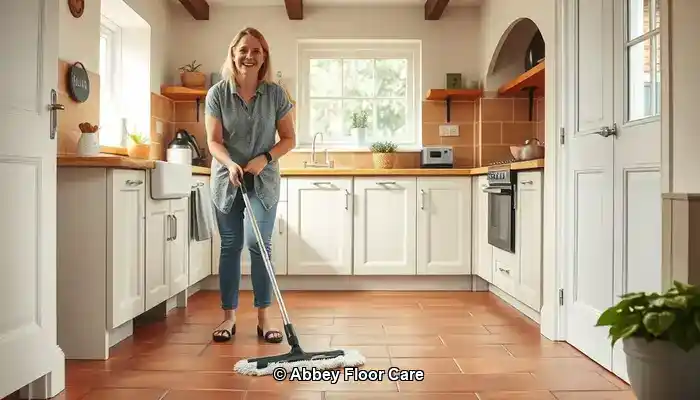Last Updated on September 29, 2025 by David
Essential Insights on Maintaining Pristine Terracotta Floors
-
- Terracotta's Porous Nature contributes to its rapid absorption of dirt and stains, particularly in humid environments like Surrey.
- Effective Sealing is Crucial to prevent moisture and dirt from infiltrating the tile's surface, thereby maintaining its integrity.
- Consistent Maintenance is Vital—daily sweeping and weekly mopping using pH-neutral cleaners are essential for keeping the tile’s aesthetics intact.
- Steer Clear of Harsh Chemicals and Steam Mops, as they can compromise the sealant and damage the tile’s surface.
- Opt for Eco-Friendly Cleaning Products, particularly in homes with children or pets.
- Consider Professional Restoration Services for comprehensive deep cleaning and resealing to ensure long-lasting protection.
- Implement Strategic Use of Rugs and Mats in high-traffic areas to minimise dirt transfer onto your tiles.
- Prioritise Moisture Management—ensuring adequate ventilation and promptly cleaning spills helps to prevent stains and mould growth.
What Causes Terracotta to Accumulate Dirt Rapidly?
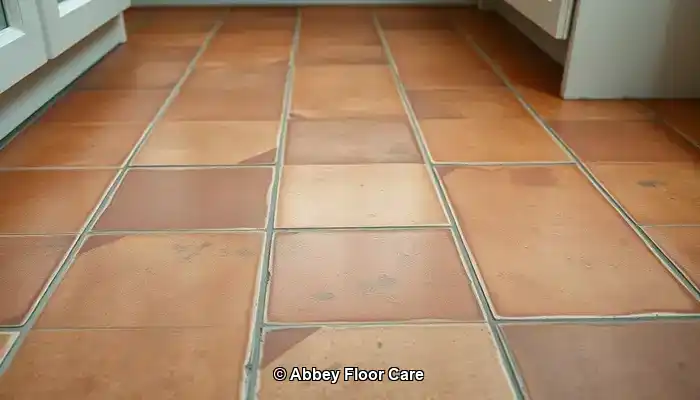
Keep Terracotta Clean Longer: Terracotta tiles are not only visually appealing but also serve as an excellent flooring option, particularly in traditional or rustic-style homes throughout Surrey. Their warm, earthy tones and natural textures enhance the character of any room. However, despite their aesthetic allure, terracotta tiles are particularly susceptible to rapid dirt accumulation. Understanding the reasons behind this challenge is the first crucial step towards keeping them clean and well-maintained.
Pro Tip: Recommended Products for Daily Terracotta Maintenance
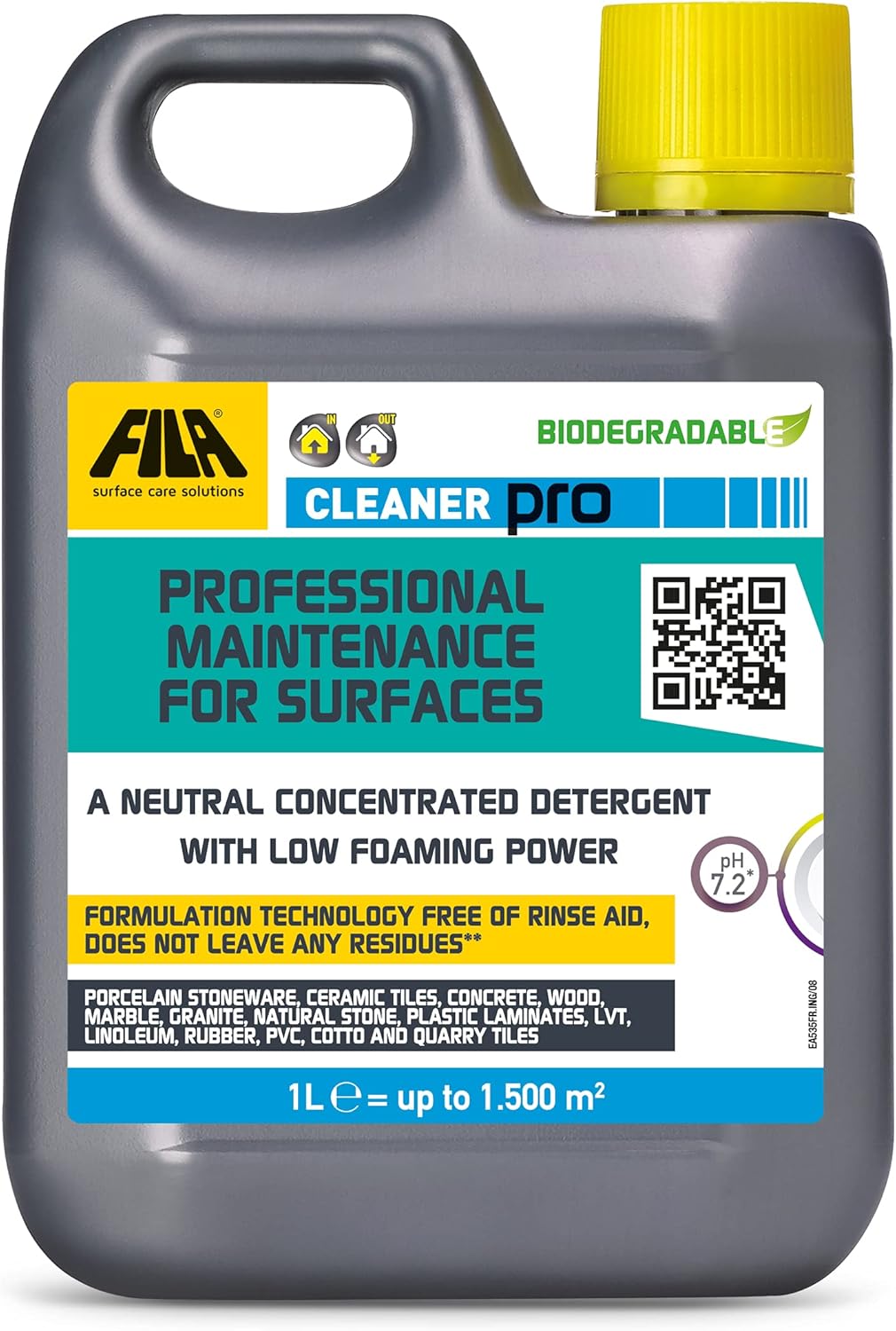
Fila Pro Floor Cleaner
|
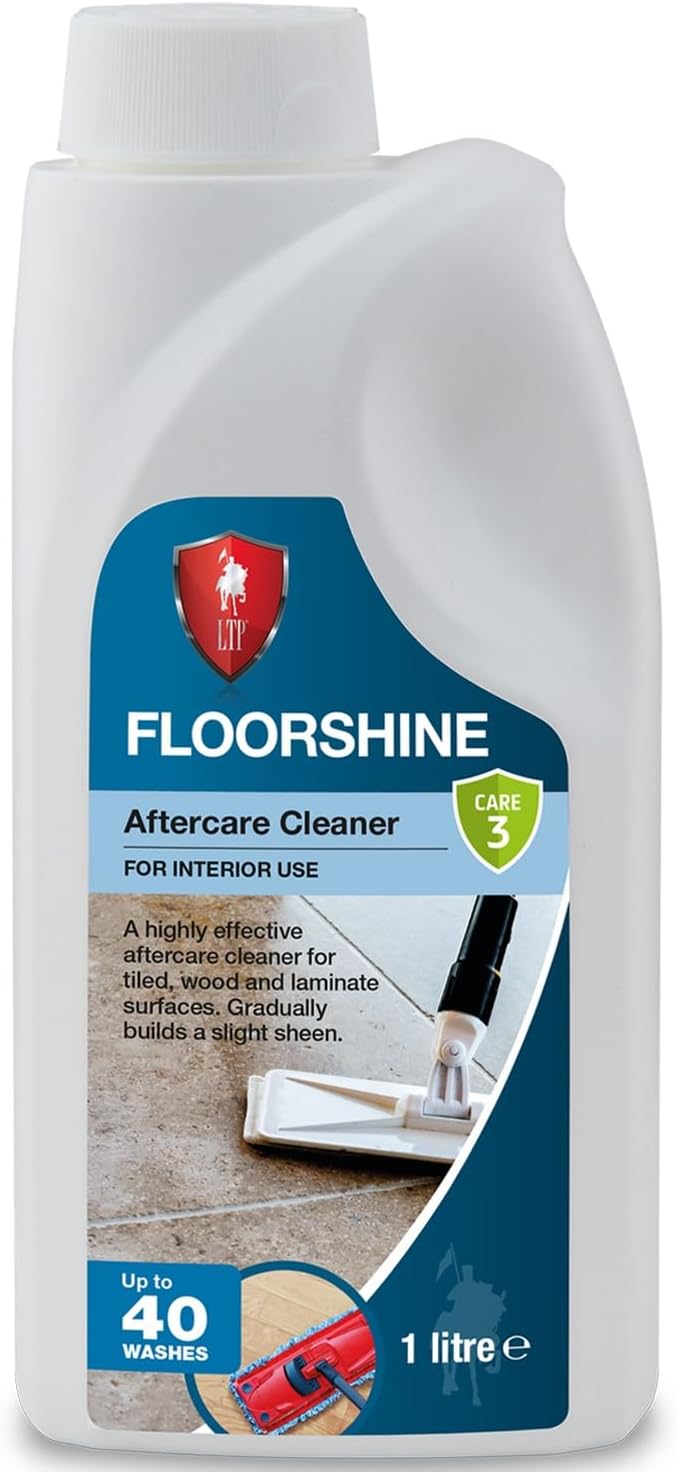
LTP Floorshine
|
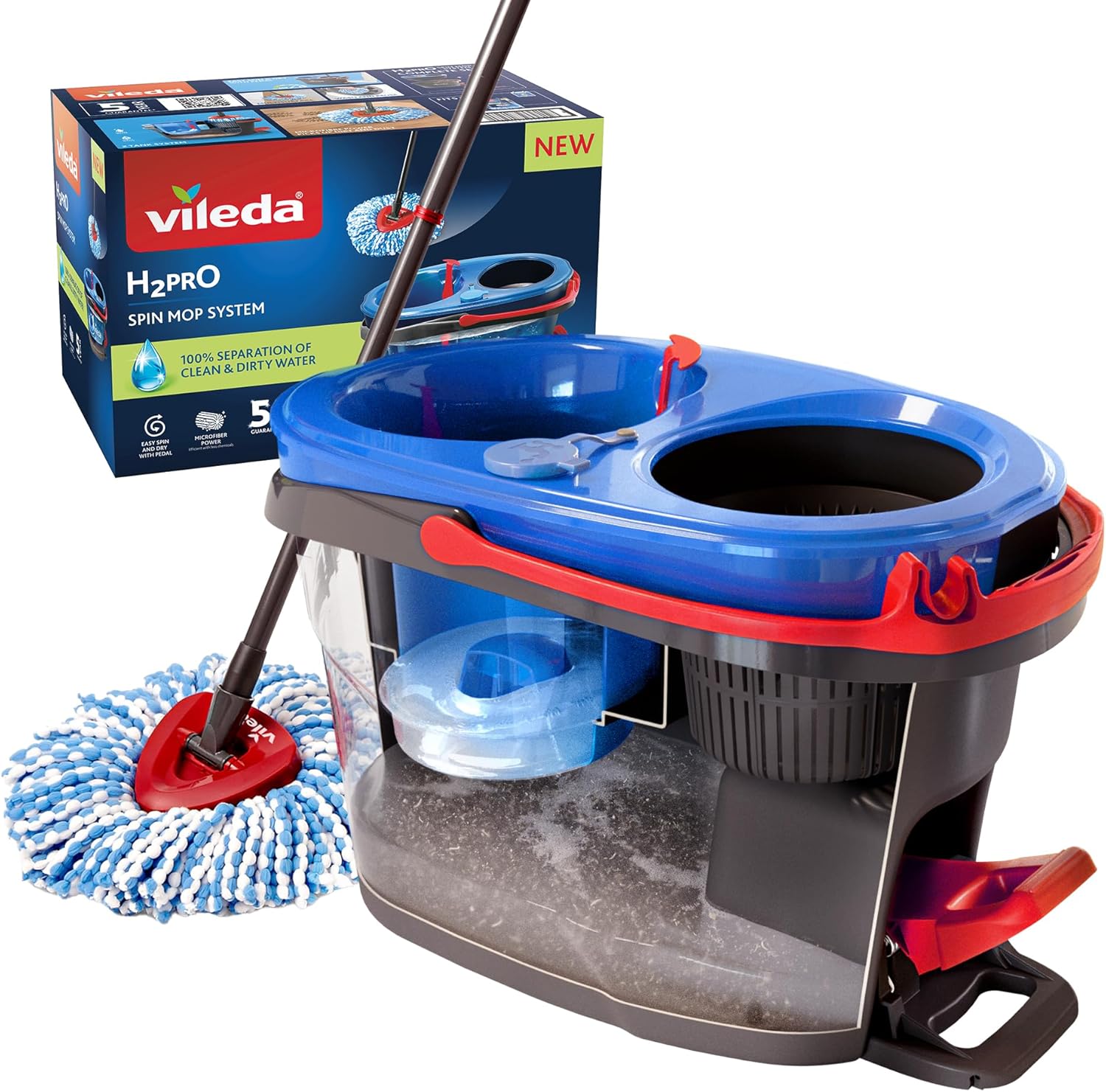
Vileda H2PrO Spin Mop System
|
Understanding Porosity: The Underlying Issue
Terracotta is crafted from natural clay and undergoes firing at comparatively lower temperatures than other types of tiles. This unique manufacturing process results in a highly porous surface, enabling the tile to absorb moisture, oils, and dirt effectively, much like a sponge. In practical use, this porosity allows grime to settle deeply into the tile, complicating its removal through standard cleaning methods.
Unsealed terracotta tiles are particularly susceptible to stains and marks. Without a protective seal, even minor spills or muddy footprints can leave behind permanent marks. Over time, this can lead to a dull, stained appearance that generally requires professional intervention to restore its original beauty.
How Surrey's Climate Affects Terracotta Cleanliness
The weather in Surrey significantly influences the speed at which terracotta floors can become dirty. The region is known for its frequent rain and damp conditions, which result in more moisture being brought indoors, particularly in areas like entryways and conservatories.
Homes situated near wooded areas or gardens face even greater challenges. Soil, pollen, and organic debris can easily find their way onto terracotta surfaces, particularly when footwear is not removed at the entrance. This increases the likelihood of dirt accumulation on your beautiful terracotta tiles.
What Daily Habits Contribute to Rapid Dirt Accumulation?
Beyond environmental factors, everyday habits can exacerbate the issue of dirt build-up on terracotta floors. Utilising inappropriate cleaning products—such as acidic solutions or bleach—can strip essential protective coatings and damage the surface of the tile. While steam mops are popular, they often force moisture into the tile, worsening the situation.
High-traffic areas, including kitchens and hallways, naturally experience more wear and tear. Without a consistent routine of sweeping and mopping, dirt accumulates quickly and embeds itself within the tile’s texture, making it increasingly difficult to clean.
Proactive Strategies to Maintain Cleaner Terracotta Floors
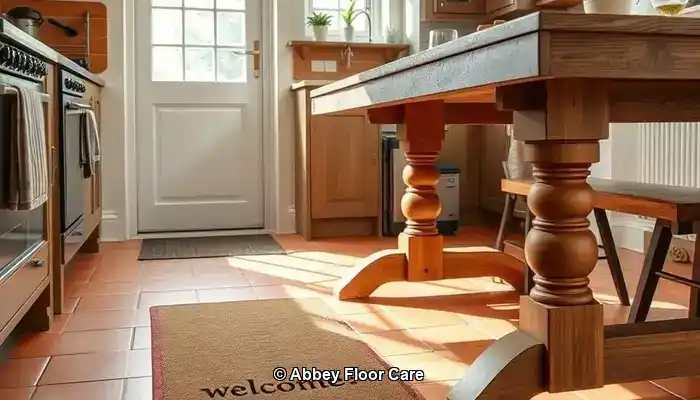
Maintaining cleanliness in terracotta floors is not merely about responding to dirt; it’s fundamentally about preventing it from settling in from the outset. In Surrey homes, where damp weather and garden traffic are prevalent, a proactive approach is vital for preserving the inherent beauty of terracotta tiles.
Sealing Your Terracotta: The First Defence Against Dirt
The most effective way to prevent terracotta from becoming dirty quickly is through proper sealing. A high-quality, breathable sealant creates a protective barrier that repels moisture, oils, and dirt. For properties in Surrey, where humidity levels can vary, sealing is crucial in preventing water absorption that can lead to staining and mould development.
Experts recommend resealing terracotta every 12 to 18 months, depending on the level of foot traffic and moisture exposure. In areas such as kitchens, hallways, and conservatories—rooms that experience daily use—more frequent sealing might be necessary. Always opt for a sealant specifically designed for porous stone and avoid glossy finishes that may trap dirt.
Smart Layout Choices: The Role of Rugs and Mats
Strategically placing rugs and mats can substantially decrease the amount of dirt that reaches your terracotta tiles. Implementing heavy-duty doormats at entrances helps to trap mud and moisture before it can spread throughout your home. In high-traffic areas like hallways or beneath dining tables, area rugs serve as protective barriers that can absorb impacts and limit wear and tear on the tiles.
For rooms that connect to the outdoors, consider washable runners that can be easily cleaned. These not only help preserve the tile but also add warmth and aesthetic appeal to your living space.
Managing Moisture in Surrey Homes
Given Surrey’s reputation for rainfall and damp conditions, moisture management is essential to combat the rapid accumulation of dirt on terracotta. Utilising dehumidifiers in enclosed spaces and ensuring proper ventilation throughout your home can greatly mitigate moisture levels. Also, promptly wipe up spills and avoid leaving wet items—such as shoes or towels—on the floor.
If your terracotta is installed in a conservatory or garden room, consider implementing blinds or UV filters to minimise condensation and protect against sun damage. These small adjustments can significantly enhance the longevity and appearance of your tiles over time.
By combining effective sealing, thoughtful design choices, and moisture management, homeowners in Surrey can markedly reduce the speed at which terracotta floors become dirty. The subsequent sections will explore optimal cleaning practices to maintain that fresh, natural appearance day after day.
Optimal Cleaning Techniques for Terracotta Tiles
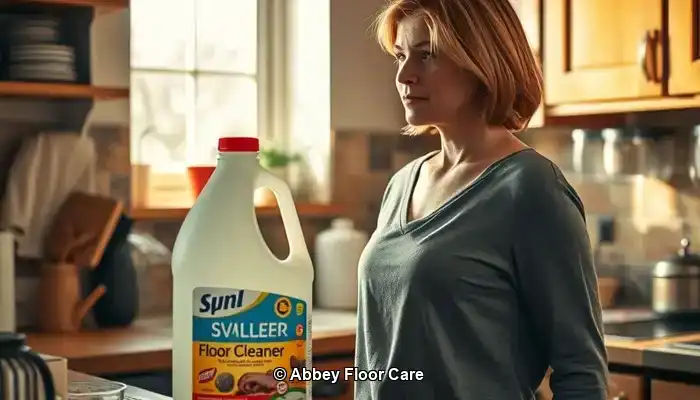
Even with appropriate sealing and proactive measures, terracotta floors require regular attention to maintain their inherent beauty. The crux of successful maintenance lies in employing the correct techniques and products that effectively clean without damaging the porous surface of the tile.
Developing a Daily and Weekly Maintenance Routine
In Surrey homes, where outdoor elements frequently infiltrate, daily sweeping or vacuuming is paramount. Utilise a soft-bristle broom or a vacuum with a hard floor setting to eliminate dust, grit, and organic debris before it has a chance to settle into the tile.
For your weekly cleaning regimen, mop with warm water and a pH-neutral cleaner specifically formulated for natural stone surfaces. Avoid soaking the floor—damp mopping is advisable. Excess water can penetrate the tile and potentially cause staining or mould growth, particularly in older or inadequately sealed installations.
Choosing the Right Cleaning Products for Terracotta
Select products that are both gentle and effective. Look for labels that indicate “stone-safe,” “non-acidic,” or “pH-neutral.” In Surrey, where eco-friendly living is increasingly popular, many homeowners prefer biodegradable cleaners that are safe for use around pets and children.
Steer clear of multi-surface cleaners that contain bleach, ammonia, or citrus extracts. These substances can strip protective sealants and etch the terracotta, leaving it more susceptible to future staining.
For stubborn stains, utilise a soft cloth and a diluted solution of stone cleaner. Never scrub with abrasive pads or wire brushes—these can scratch the surface and complicate cleaning efforts moving forward.
What Should I Avoid: The Risks of Harsh Chemicals and Steam Cleaning?
While steam mops may appear to be a convenient option, they are ill-suited for terracotta. The high temperatures and moisture can penetrate the tile and compromise the sealant, leading to long-term damage. Likewise, acidic cleaners like vinegar or lemon juice—even when diluted—can erode the tile’s surface and cause discolouration.
It’s advisable to stick to gentler methods and always test new products on a small, inconspicuous area before applying them throughout the floor.
Weighing Professional Care Against DIY Terracotta Maintenance
When it comes to the upkeep of terracotta floors, many homeowners in Surrey initially opt for DIY methods. Although regular sweeping and mopping can be beneficial, there comes a time when professional assistance becomes not just advantageous, but necessary.
When is it Time to Contact a Surrey Tile Specialist?
If your terracotta tiles exhibit signs of deep staining, uneven colour, or surface wear, it may be time to seek expert assistance. Professional tile care specialists in Surrey employ advanced equipment and stone-safe products that penetrate deeper than standard household cleaners. They can assess whether your sealant has degraded and recommend an appropriate resealing schedule tailored to your home’s specific conditions.
Restoration services typically encompass deep cleaning, stain removal, and the reapplication of breathable sealants that protect without altering the natural appearance of the tile. For older homes or heritage properties, specialists can even replicate the original finish to preserve authenticity.
Assessing Cost Versus Longevity: Is Professional Care Worth It?
While DIY cleaning may seem more economical, it often results in short-lived outcomes. Without appropriate sealing and deep cleaning, dirt can continue to accumulate—necessitating more frequent maintenance and risking irreversible damage.
In contrast, professional care extends the lifespan of your terracotta floors. A single restoration session can rejuvenate colour, eliminate embedded grime, and safeguard the surface for months, or even years. In high-traffic areas, such as kitchens or hallways, this investment proves beneficial in reducing maintenance efforts and enhancing visual appeal.
Homeowners in Surrey who prioritise long-term property maintenance and curb appeal often discover that expert services provide peace of mind and superior results. Moreover, many local providers offer eco-friendly options and tailored maintenance plans to suit individual lifestyles.
Eco-Friendly and Safe Cleaning Solutions for Terracotta
The earthy charm of terracotta deserves care that aligns with its natural qualities. For Surrey homeowners seeking to maintain clean floors without compromising health or environmental standards, eco-friendly cleaning is the ideal approach. Thankfully, modern products and techniques facilitate the protection of your tiles and household without resorting to harsh chemicals.
Choosing Non-Toxic Sealants and Cleaners
Conventional sealants often contain solvents that release volatile organic compounds (VOCs), which can linger in the air and negatively impact indoor air quality. Eco-friendly alternatives now use water-based formulations that are low in VOCs and safe for both children and pets.
When selecting a cleaner, seek out labels that indicate “biodegradable,” “plant-based,” or “stone-safe.” These products are crafted to lift dirt without causing harm to the porous surface of terracotta. Brands specialising in natural stone care often provide concentrated solutions that can be diluted for regular use, minimising waste and packaging.
Safe Alternatives for Homes with Pets and Children
In bustling Surrey households, safety is as crucial as cleanliness. Avoid using bleach, ammonia, and acidic cleaners like vinegar, which can not only damage the tile but also pose risks to pets and young children. Instead, consider gentle formulations made from coconut oil derivatives, citrus enzymes, or mineral-based components.
If you enjoy DIY cleaning, a simple mixture of warm water and a few drops of castile soap can be surprisingly effective for light cleaning tasks. Just ensure to test any homemade solution on a small area first to guarantee it does not impact the sealant or finish.
Fostering Sustainable Cleaning Habits
Eco-friendly care extends beyond the choice of products—it encompasses the habits we adopt as well—Utilise reusable microfiber cloths and mops instead of disposable pads. Regular sweeping can help diminish the necessity for frequent wet cleaning. Additionally, when resealing, opt for products that feature recyclable packaging and minimal environmental impact.
Numerous floor care professionals in Surrey now provide green cleaning packages, employing certified non-toxic products and sustainable methods. If you’re uncertain where to begin, scheduling a consultation with a local expert can help you establish a routine that is both effective and eco-conscious.
Ensure Your Terracotta Floors Remain Stunning
Terracotta flooring adds warmth, character, and timeless appeal to homes throughout Surrey. However, its porous nature necessitates thoughtful care to maintain its cleanliness and vibrancy. By understanding the reasons behind the rapid accumulation of dirt, sealing the tiles appropriately, and implementing intelligent cleaning practices, you can significantly reduce grime build-up and enhance the longevity of your tiles.
Whether you are managing a busy household or restoring a historic property, consistency is key. Daily sweeping, pH-neutral cleaning, and seasonal resealing play a pivotal role in maintaining an attractive environment. When stains or signs of wear become apparent, do not hesitate to contact a local specialist for professional restoration services.
Utilising eco-friendly products and safe cleaning routines ensures that your floors remain beautiful without compromising your health or the environment. With the right approach, terracotta can continue to be a stunning feature in your home for decades to come.
Are you ready to safeguard your floors the intelligent way? Contact us today for expert terracotta maintenance tailored to the unique conditions of Surrey. Let’s work together to keep your home looking its best—naturally.
Frequently Asked Questions About Terracotta Maintenance
Terracotta floors are a classic choice, but they come with specific care requirements. Below, we address the most commonly asked questions from Surrey homeowners eager to keep their tiles clean, protected, and visually appealing.
How Often Should I Reseal My Terracotta Tiles?
In most Surrey residences, terracotta should be resealed every 12 to 18 months. However, this frequency can vary based on foot traffic, exposure to moisture, and whether the tiles are located indoors or outdoors. Areas such as kitchens, hallways, and conservatories may require more regular resealing. If your tiles begin to absorb water or appear dull, it’s time to consider resealing.
Can I Use Vinegar or Bleach to Clean Terracotta?
No—vinegar, bleach, and other acidic or harsh cleaning agents can severely damage terracotta. These substances break down sealants and etch the tile's surface, leading to permanent discolouration. Always opt for pH-neutral, stone-safe cleaners specifically designed for porous flooring.
What’s the Best Mop for Cleaning Terracotta Floors?
A microfiber mop is highly recommended. It effectively traps dust and dirt without scratching the surface and utilises minimal water, which is crucial for porous tiles like terracotta. Avoid sponge mops or steam mops, which can oversaturate the tile and weaken the sealant over time.
Is It Safe to Use DIY Cleaning Solutions on Terracotta?
Yes, but exercise caution. A mild blend of warm water and castile soap can be effective for light cleaning tasks. Always test any homemade solution on a small, hidden area before widespread application. Avoid anything acidic or abrasive, and refrain from using homemade cleaners on unsealed tiles.
What Should I Do If My Tiles Have Already Stained?
If stains are present, professional restoration services offer the best solution. Tile care specialists in Surrey can deep clean, remove embedded grime, and reseal the surface to restore the tile’s original colour and texture. DIY methods may exacerbate the damage if inappropriate products are used.
The Article Tired of Dirty Terracotta? How to Keep It Clean Longer first found on https://www.abbeyfloorcare.co.uk
